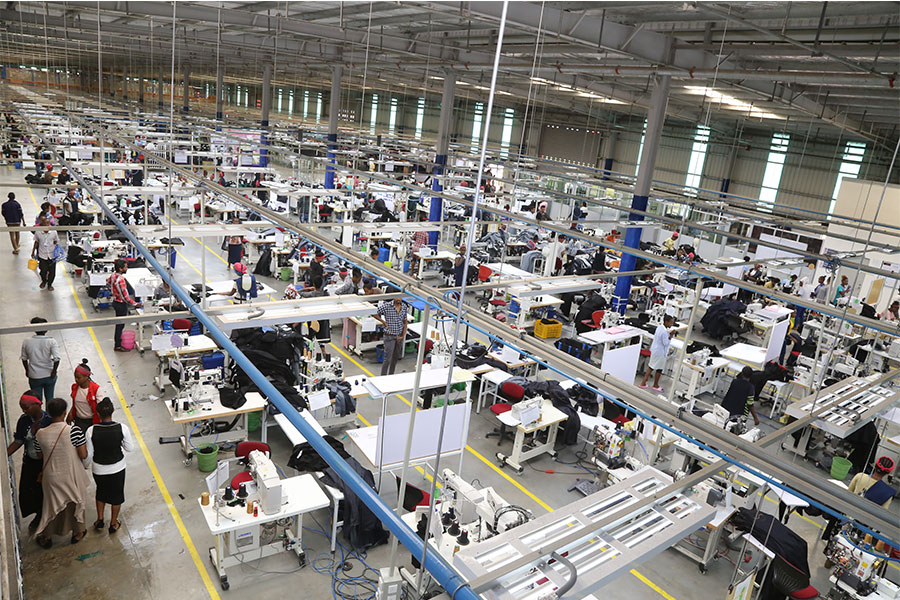
Nov 25 , 2023
By Ricardo Hausmann
Effective industrial policy, like the body's immune system, requires a nuanced understanding of the economic landscape, adapting to specific needs and contexts. It involves a synergy between public entities and the private sector, ensuring that interventions are well-targeted and do not lead to negative side effects like policy capture or bureaucratic inefficiency, writes Ricardo Hausmann, a professor at Harvard Kennedy School and director of the Harvard Growth Lab, in this commentary provided by Project Syndicate (PS).
Vitamin "C" may not be particularly effective at preventing the common cold or treating cancer, but a lack of it can cause scurvy. As a result, daily consumption is essential to a healthy diet. In contrast, penicillin cures bacterial infections, although its overuse can lead to drug-resistant germs. It should thus be taken only when absolutely necessary.
Is industrial policy more like vitamin "C" or penicillin? Can a deficiency lead to problems, meaning that regular, modest amounts are crucial to a well-functioning economy? Or should it be used sparingly to combat a particular type of infection?
Infections represent market failures, which many economists tend to see more as the exception than the rule. They would argue that leaving the body to cure itself is better than intervening. As the old joke goes, an untreated cold lasts a week, whereas a treated cold lasts seven days. The late Nobel laureate Gary Becker famously quipped that "the best industrial policy is none at all."
From another perspective, however, market failures are more widespread and generic. Firms have little incentive to train their workers and invest in research and development (R&D), as other companies could lure away their employees and copy their costly ideas. Meanwhile, it can be difficult to coordinate the inputs – including electricity, water, mobility, logistics, and security – required to make a particular location suitable for manufacturing.
Consequently, it has become standard practice for the government to share training costs, subsidise R&D through the tax code, and plan industrial zones. Like vitamin "C", these policy interventions are beneficial for many industries and should be recurrent.
The reality, however, is more complex: market failures are endemic but also extremely heterogeneous; as such, they can rarely be treated with generic tools. To understand why, we must remember that well-functioning markets achieve three things.
Through the price system, they reveal highly decentralised information that is distributed across the economy; through the profit motive, they provide incentives to create value by producing goods and services where gaps between the price of output and that of the requisite inputs is large; and, through financial markets, resources are allocated to those firms whose responses to the information contained in prices suggest future profitability.
Market failures, including the provision of public goods, create challenges to information, incentives, and resource mobilisation that industrial policy must ultimately overcome. For example, without sanitary controls, safety certifications, and cold-chain logistics, international trade in fresh produce would not exist, just as the lack of infrastructure explains why high-speed rail does not exist in the United States.
Similarly, nascent industries often face daunting chicken-and-egg problems. For example, people are unwilling to buy electric vehicles (EVs) as long as the charging infrastructure is inadequate. However, investors are reluctant to sink money into charging stations without assurances that EV sales will increase. Providing financial guarantees to investors would expand the charging network and boost EV sales, making the guarantees unlikely to be used and thus cheap to issue.
Such interventions, however, must be designed for each context, just as different antibiotics are used to treat specific infections. This raises the question of who diagnoses the problem and prescribes the course of action, and whether their sources of information are adequate.
Given this, a better metaphor for industrial policy may be the body's immune system, which protects against various invaders by using a highly decentralised detection network to identify threats and determine when it needs to act. Leveraging its "memory" of previous infections, the immune system develops antibodies to address the issue at hand. Each exposure to disease thus strengthens the system's capacity.
Such an analogy is apt because industrial policy involves close cooperation between a wide network of public entities – including area ministries, economic development boards, investment-promotion agencies, and special economic zones – and private-sector actors. Like the immune system, industrial policy can fail in one of two ways: its response can be too weak, or it can misfire, as with autoimmune disorders, attacking the body it is meant to protect. Policy capture, corruption, and bureaucratic inefficiencies can lead governments to exacerbate, instead of resolve, market failures.
The fact that industrial policy can backfire does not imply that countries should eschew it. Learning how to deploy these interventions is as important for a well-functioning economy as developing sound education and health policy, and a failure to do so would likewise carry an unacceptable social cost.
PUBLISHED ON
Nov 25,2023 [ VOL
24 , NO
1230]


My Opinion | Dec 19,2021

Fortune News | Apr 13,2019

Radar | Oct 23,2021

Commentaries | Aug 08,2020

Radar | Oct 02,2023

Fortune News | Mar 23,2024

Life Matters | Aug 06,2022

Agenda | May 25,2019

Radar | Dec 26,2020

My Opinion | Feb 23,2019

My Opinion | 131451 Views | Aug 14,2021

My Opinion | 127803 Views | Aug 21,2021

My Opinion | 125784 Views | Sep 10,2021

My Opinion | 123419 Views | Aug 07,2021

Dec 22 , 2024 . By TIZITA SHEWAFERAW
Charged with transforming colossal state-owned enterprises into modern and competitiv...

Aug 18 , 2024 . By AKSAH ITALO
Although predictable Yonas Zerihun's job in the ride-hailing service is not immune to...

Jul 28 , 2024 . By TIZITA SHEWAFERAW
Unhabitual, perhaps too many, Samuel Gebreyohannes, 38, used to occasionally enjoy a couple of beers at breakfast. However, he recently swit...

Jul 13 , 2024 . By AKSAH ITALO
Investors who rely on tractors, trucks, and field vehicles for commuting, transporting commodities, and f...

Jun 28 , 2025
Meseret Damtie, the assertive auditor general, has never been shy about naming names...

Jun 21 , 2025
A well-worn adage says, “Budget is not destiny, but it is direction.” Examining t...

Jun 14 , 2025
Yet again, the Horn of Africa is bracing for trouble. A region already frayed by wars...

Jun 7 , 2025
Few promises shine brighter in Addis Abeba than the pledge of a roof for every family...

Jun 29 , 2025
Addis Abeba's first rains have coincided with a sweeping rise in private school tuition, prompting the city's education...

Jun 29 , 2025 . By BEZAWIT HULUAGER
Central Bank Governor Mamo Mihretu claimed a bold reconfiguration of monetary policy...

Jun 29 , 2025 . By BEZAWIT HULUAGER
The federal government is betting on a sweeping overhaul of the driver licensing regi...

Jun 29 , 2025 . By NAHOM AYELE
Gadaa Bank has listed 1.2 million shares on the Ethiopian Securities Exchange (ESX),...